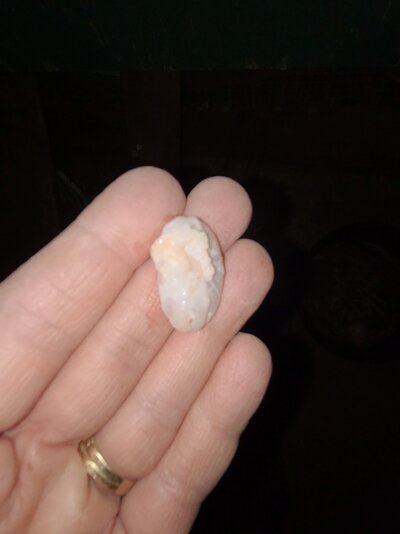Thank you for the tag
@Wyorp Rock.
@khind, I am so sorry that you are going through this with your hen. I will be glad to talk to you about Marek's Disease.
For now I have skimmed the last two pages of the thread and get an idea of what you are going though and what you are dealing with.
I did look at the pictures of your girl's eyes. I had 3 birds with OMD and I have to say my first impression of her eyes are that they look pretty normal compared to what mine looked like. They call OMD Gray Eye because the iris of the birds eye takes on a sickly greenish gray color and the pupils on my birds became pinpoint and misshaped.
The color is a bit odd but the pupils look pretty normal.
Have you checked her pupils for reaction? Shined a light quickly in her eye to see if her pupil constricts in a darkened room?
I shone my phone flashlight on her eye 1-2" away in the run (in the evening but it wasn't actually dark out) & she didn't flinch and she never moved her head even though I held it for maybe 20 seconds. Pupil didn't change. Then I tried with a couple other nearby hens who were looking to see what I was up to, and they reacted to the flashlight and/or phone being held up to them with concern and maybe even fright. I'll admit their pupils didn't constrict all that much, but they did constrict whereas I didn't see anything with this girl. That was with one eye anyway. The other eye was a little hard to get to. I did try later that night in the garage though, where it was dark, and her pupil still didn't seem to change.
But... she attacked small bits of moistened food last night, which sure made it seem like she could see! So I may have done a bad job of testing her eyes. I'll try again. Or maybe one eye is still good... But I also wonder if she's just weak from possible reproductive infection & then maybe eating less as a result of that.
I still have not put her down. This week at work has been just horrible time-wise & I've had so much work to do that I came in to accomplish something before going to get her off the roost last night. Then, when I got her and brought her in, I fed her some wet food (with some PoultryCell) - and that's when I noticed that she was still perkier than she had been the day before, And that she seemed to be able to see! So I fed her again right away, and she could perfectly pick out the very small random chunks that fell onto the floor.
So I decided to order some amoxicillin, since neither
TSC nor another feed store carries any. It might be a moot point, because I might not be able to fix the egg-laying problem, but I'll get it anyway and watch her closely and remain flexible in deciding til it gets here.
This a.m. she was all spunky and ate like a champ. She had not done that the a.m. before. She also vocalized and walked around the garage to explore. Then she walked right to the water when I put her in the run with the others. She jumped onto the roost bar of the run from the floor with no problem...
Tonight we have a mandatory late night at work so I'll check and bring her in as soon as I get home. At least the weekend will be here so I can care for her more. I teach, and we're right in the middle of state testing, or I would have tried to bring her to work, into a spare room across the hall.




